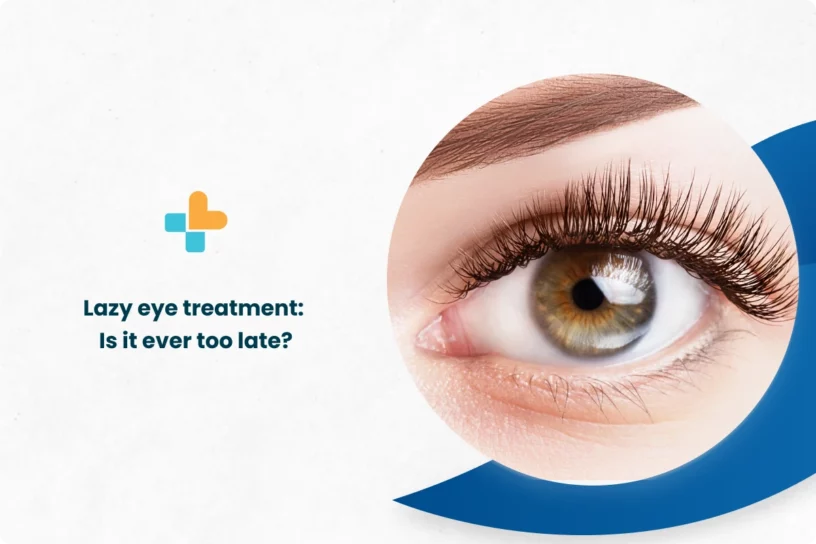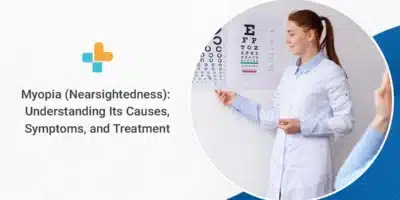Introduction to Lazy Eye Treatment
Lazy eye, also known as amblyopia, is a vision development disorder that can cause decreased vision in one eye. It is a common condition that affects around 2-3% of the population and is typically diagnosed in childhood. While the condition can cause significant visual impairment, there are various treatment options available that can help improve vision and prevent further deterioration.
What is Lazy Eye?
Lazy eye occurs when one eye is not used as much as the other, causing the brain to favor one eye over the other. This leads to a decrease in visual acuity and depth perception in the affected eye. Lazy eye can be caused by a variety of factors, including misalignment of the eyes, unequal refractive error, and deprivation from visual experiences.
What Causes a Lazy Eye?
There are several possible causes of lazy eye, including:
- Strabismus: a condition in which the eyes are misaligned and do not point in the same direction.
- Refractive errors: unequal nearsightedness, farsightedness, or astigmatism in each eye.
- Deprivation: lack of visual stimulation to one eye, such as a cataract or ptosis (drooping eyelid).
Types of Lazy Eye
There are three main types of lazy eye:
1. Strabismic Amblyopia
This type of lazy eye is caused by misalignment of the eyes, which causes the brain to ignore input from one eye.
2. Refractive Amblyopia
This type of lazy eye is caused by unequal refractive errors in each eye, which causes the brain to ignore input from the eye with the higher refractive error.
3. Deprivation Amblyopia
This type of lazy eye is caused by a lack of visual stimulation to one eye, such as from a cataract or drooping eyelid.
Is It Too Late for Lazy Eye Treatment?
The earlier lazy eye is diagnosed and treated, the more successful the treatment is likely to be. However, even in adults, lazy eye treatment can still improve vision and prevent further deterioration.
How Is Lazy Eye Treated?
Treatment for lazy eye typically involves a combination of different approaches, including:
1. Vision Therapy
Vision therapy involves exercises and activities designed to improve visual function and eye coordination.
2. Eyepatches
Wearing an eyepatch over the strong eye can force the brain to use the weak eye, which can help improve vision.
3. Surgery
Surgery can be used to correct strabismus or other underlying conditions that are causing lazy eye.
4. Prescription Lenses
Wearing glasses or contact lenses with the correct prescription can help correct refractive errors and improve vision.
In conclusion, lazy eye is a common vision development disorder that can cause decreased vision in one eye. The earlier it is diagnosed and treated, the more successful the treatment is likely to be. Treatment options include vision therapy, eyepatches, surgery, and prescription lenses. It is important to consult an eye doctor if you suspect you or a child may have lazy eye.
FAQs
- What age is too late to treat amblyopia?
There is no specific age at which it is too late to treat amblyopia. However, the earlier the condition is diagnosed and treated, the better the chances of success. The brain’s plasticity, which allows it to adapt and change, is greater in children and decreases with age, so the treatment may be less effective in adults.
- Does amblyopia get worse with age?
Amblyopia can potentially get worse with age if left untreated. It is important to address the condition as soon as possible to prevent further deterioration of vision in the affected eye.
- Does patching help lazy eye in adults?
Patching can be an effective treatment for lazy eye in adults, but the results may not be as dramatic as in children, as the brain’s plasticity decreases with age. Adults may also require a longer period of treatment than children.
- Can amblyopia be corrected in adults?
While amblyopia can be corrected in adults, the results may not be as successful as in children. Adult brains have less plasticity, which means that the brain may not be able to adapt as easily to the changes in vision. In addition, adults may require a longer period of treatment and may not achieve the same level of improvement as children. However, it is still worth consulting with an ophthalmologist and trying the treatment as it may improve vision.
Get in touch with Ayu Health at +91 636-610-0800 or book an appointment on our website.
Our Hospital Locations
Ophthalmology Surgery Hospitals in Chandigarh | Ophthalmology Surgery Hospitals in Bangalore | Ophthalmology Surgery Hospitals in Jaipur | Ophthalmology Surgery Hospitals in NCR | Ophthalmology Surgery Hospitals in Hyderabad
Our Doctors
Ophthalmology Surgery Doctors in Chandigarh | Ophthalmology Surgery Doctors in Bangalore | Ophthalmology Surgery Doctors in Jaipur | Ophthalmology Surgery Doctors in NCR | Ophthalmology Surgery Doctors in Hyderabad




